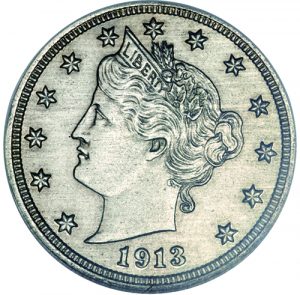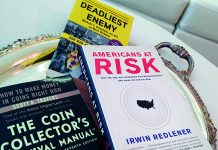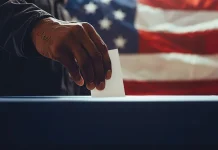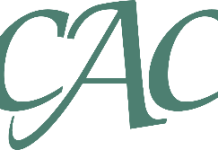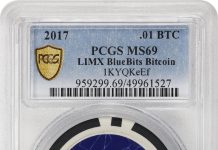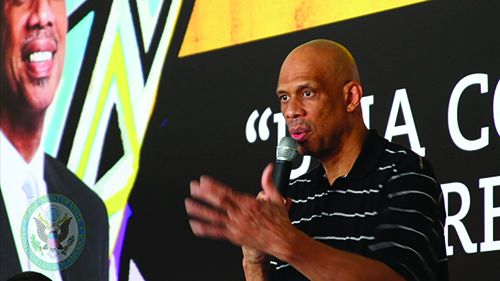
By Joshua McMorrow-Hernandez
Editor’s Note: This is the conclusion of a two-part series. Enjoy Part I >>>
Read a good book lately? Hopefully, it was a coin book, especially because there are so many great numismatic reads out there. Some have even received accolades from The New York Times, the same daily that called the 1984 book The Coin Collector’s Survival Manual by award-winning author and numismatic personality Scott Travers “one of the most important coin books ever written.” Now in a revised seventh edition, The Coin Collector’s Survival Manual remains one of the leading books on numismatics, even in an era when it seems fewer people are reading physical books.
Literary agent Bill Corsa, who helped get many numismatic titles to print in the late 20th century, says the 21st century has brought a change in how people find information.
“The proliferation of information on the internet, in news groups, blogs, and podcasts – information that can be updated instantaneously – has become a more popular way of accessing information,” he remarks. “I believe there is still room for physical numismatic books in the 21st century, but in a different publishing model than we’ve previously seen. These days, it is more likely you would see a numismatic book made available as a digital eBook or a print-on-demand physical book.”
Still, physical books produced by traditional publishing houses have their place. Just ask prolific numismatic author Q. David Bowers, who has been writing about the hobby since the 1950s.
“Books are easy to use and store, and they are permanent,” he notes. “In comparison, the internet and cyberspace information are ephemeral and easily lost or forgotten. Many books of years ago still live today, a poster example being S.S. Crosby’s Early Coins of America (1875), still a standard for any reference library.”
Still, the author and co-author of dozens of Whitman Publishing books believes various forms of media are important to spreading the word about numismatics.
“Print is to the fore as it is everlasting. Interviews and visuals are good as they freeze in time certain events such as auctions, conventions, coin launches, etc.”
Bowers recommends spending a few hundred dollars to build a robust numismatic library.
“Do a lot of reading before doing a lot of spending!” In other words? “Buy the book before the coin.”
All Press is Good Press?
“Mainstream media stories about record prices for coins and banknotes, and stories about amazing new discoveries of valuable, historic numismatic rarities, are important for helping to attract and retain the public’s interest in the hobby,” reports Donn Pearlman, who now serves as president of Donn Pearlman & Associates Public Relations. “The ‘gee-whiz’ and ‘wow’ elements are important and newsworthy,” says the award-winning Chicago newscaster and journalist.
However, sometimes the press gets the story wrong. “Unfortunately, numismatic information is sometimes not accurately conveyed in the general news media. In one notorious incident a few decades ago, a major news wire service reporter incorrectly indicated in his nationwide story that every 1943-dated Lincoln cent was worth a half-million dollars.”
Pearlman recounts the great pains he took in getting a correction issued: “During that time, one dealer told me a woman came into his store with dozens of common 1943 zinc-coated steel cents and demanded $500,000 for each one. After unsuccessfully trying to convince the woman he was not trying to cheat her by offering only a few cents apiece, he finally blurted out, ‘Lady, how can they be rare? You’ve got a whole roll of them!’”
Part of the problem? Some coin-inclined folks who speak with reporters may assume the journalist will know or appropriately translate the same insider numismatic jargon that collectors and dealers throw around, nearly as if it’s common knowledge.
“It’s important for any collector or dealer working with a reporter, editor, content producer, or blogger to use simple, everyday language,” Pearlman advises. “Although most news reporters do not let anyone outside the newsroom see their full story prior to publication, you certainly can politely encourage the reporter to check back with you if he or she has any questions while writing the story.”
Such spot checks can save the reporter embarrassment, the news outlet an awkward correction, and countless coin dealers – and non-collectors – a lot of headaches.
“For example, a recent daily newspaper story about the sale of a rare 1793 Strawberry Leaf variety large cent had a headline indicating the coin was from 1973.”
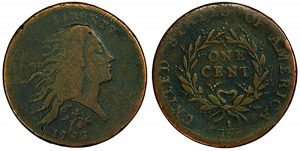
Harvey Stack, the co-founder of the iconic numismatic auction house Stack’s Bowers Galleries, has seen what happens when a public uninformed about the nuances behind rare coin prices sees headlines about multi-million-dollar coins taking big bucks at auctions.
“I remember well when the Olsen specimen of the 1913 Liberty Head nickel sold at auction in 2010 for $3.7 million – an unheard value for a five-cent piece,” Stack recalled. “A large part of the public started looking at all their change.”
Apparently, one young man heard the news and became excited when he found an even older 1907 Liberty nickel in a jar of loose change.
“He looked up the phone number of a coin dealer in a phone directory and found the name ‘Stack’s’ and called, shouting, ‘I have one of those rare nickels that just sold for $3 million!’”
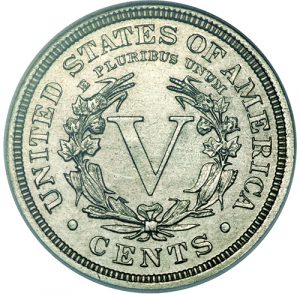
Stack says he asked him to bring the coin in, to determine if it really was a legitimately rare find.
“So, in comes this young man, he shows me the coin, and says, ‘This coin is better than the one that just sold! It is dated ‘1907’ – six years before the one that sold for over $3 million. How much is it worth?’”
Stack said what came next was nearly as hard on him as it was for the 1907 Liberty nickel’s exuberant claimant.
“We had a large job to straighten out and calm this young man down,” he recalls. “We showed him a price book that the 1907 nickel was a common date, with over 39 million struck and many still in existence. We went to our stock and showed him that we had dozens of them, from circulated to proof grade.”
The longtime coin expert relayed to the disheartened man that 1907 nickels could be bought in lower grades for a few dollars and that even a super Mint State example was, at the time, priced below $100.
“The young man cried as he had envisioned getting a lot of money. He felt he could now pay for college, pay off the family mortgage, move to a better house, buy a new car, and lots of other things. He felt he would be the ‘miracle’ that his family would get. What a letdown…”
Why does Stack share this story?
“To show that publicity about the value of coins is sometimes very misleading,” he asserts. “Readers by the millions who read special stories [about the value of ultra-rare coins] get their hopes up, and they imagine – like this young man – that they have found ‘the pot of gold at the end of the rainbow.’ This story proves, as many like it, that the public is misinformed about coins in general – what is rare isn’t usually explained, and the amount of money spent is all they see, and their hopes are driven to the sky.” He laments, “this dampens some from even thinking about becoming a collector.”
A-List Stars
The 1913 Liberty nickel, as Stack mentions in previous paragraphs, is one of the first rare coins many non-collectors ever hear about. Other A-list numismatic trophies include the aforementioned 1793 Strawberry Leaf large cent and 1943 bronze Lincoln cent. Then, there are the other rarities that routinely break headlines in the general media upon selling, including the 1894-S Barber dime, 1794 Flowing Hair dollar, 1804 Draped Bust dollar, and the 1787 Brasher Doubloon.
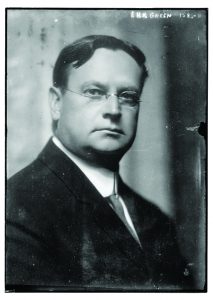
These seven-figure coins and others like them are the types of gems owned by many of the world’s richest and most famous celebrities. Stack and his family of expert dealer-auctioneers have served some of the hobby’s biggest names over the years – think Louis Eliasberg. Jimmy Hayes, E.H.R. Green, Harry Bass, and on and on. But they have also encountered some of the brightest talents from the screen and stage, including comedian Jonathan Winters, American theater composer Jerome Kern, and lyricist Irving Berlin.
“Plus, we had many walkers-by from the entertainment world on 57th Street [in New York City] since Hollywood producers had an office nearby, as well as the Entertainment Actors Guild association office, which was on our corner,” Stacks recounts. “Many celebrities walked by looking in our windows or came in to ask questions but were not collectors.”
While Stack served as the veritable dealer to the stars by the Atlantic shore, many celebrity coin collectors kept dealers busy near the Pacific coast. And specifically so in southern California, where the numismatic stars have swirled about the National Basketball Association’s Los Angeles Lakers’ home court.
Late team owner Dr. Jerry Buss had been a coin collector since his childhood and eventually went on to own great numismatic rarities such as the 1913 Liberty nickel, 1894-S Barber dime, and 1804 Draped Bust dollar. Lakers legend Kareem Abdul-Jabbar, playing with the renowned Los Angeles team from 1975 through 1989, served on the Citizens Coinage Advisory Committee from 2017 through 2018 as a representative of the public, helping make decisions on various designs for new United States Mint coins.
And then there’s Dennis Rodman. Known around the courts as “The Worm,” Rodman carries with him a long and illustrious professional basketball career that includes one colorful season with the L.A. Lakers in 1999. Rodman is perhaps better known by many for his off-court career. His unique style helped him become a household name in the 1990s, though he isn’t without his controversies – such as his friendship with North Korean leader Kim Jong-un. Upon one of his meetings with the notorious North Korean politician, Rodman famously received a gift of North Korean coins.
So, what’s up with this connection between the L.A. Lakers and numismatics? Perhaps one can trace it right back to Dwight N. Manley, Rodman’s former agent and many other NBA stars. The longtime coin collector says Q Scores affect numismatics when celebrities are connected to stories about rare coins and other hobby news.
“Acting, per se, is about fantasy and reality meeting,” Manley remarks. “Coin collecting is about history and imagination – so [they’re] similar to each other. The ability to hold a 350-year-old colonial coin and have a connection to the pilgrims and revolutionary heroes is unrivaled.”
He recalls helping Buss, who assigned Manley with building three sets of Peace dollars in Mint-State 63 for each of his youngest children.
“He wanted them to learn about rarity, quality, and money,” Manley says. “Today, they own half of the team and seem to have heeded his fatherly advice.”
A coin collector since the age of six, Manley says his love for numismatics is in his blood.
“I can’t explain the passion, as I can vividly remember 48 years ago deciding to sift through a coffee can of cents my parents had and finding a 1909 Lincoln [cent]. I then got the blue Whitman album at the local Toy City, and the rest is history.”
Manley has delivered lessons about coins to his children and their friends both at home and in school and believes a key element to spreading the love of the hobby to the next generation is teaching numismatics in history classes during the elementary grades.
“Coin collecting teaches so much.”

